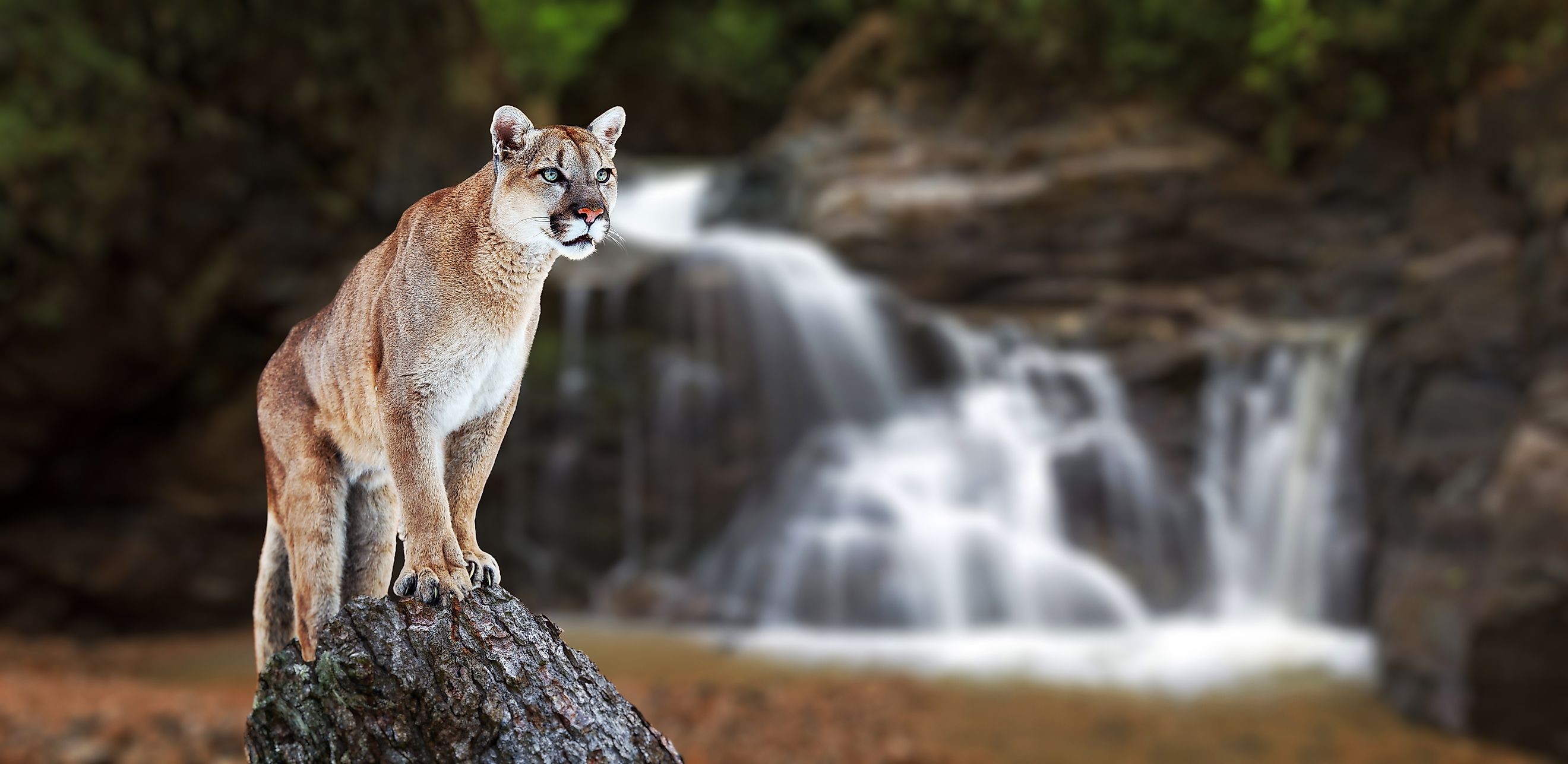
The 13 Deadliest Animals in Oregon
Oregon, a coastal state situated between Washington and California, is full of beautifully diverse landscapes, including rugged coastlines, mountains, and valleys. It is also home to many different animals, from sealife to land mammals. It is important, especially if you plan on camping or hiking, to familiarize yourself with some of the more dangerous animals present in Oregon. Although the chances of an attack are rare, they happen, and it's crucial you know the right steps to deal with the unexpected.
Cougars
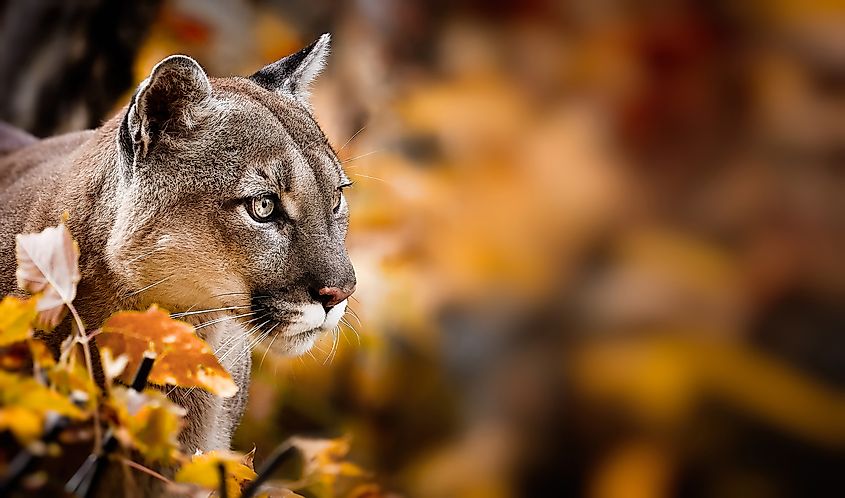
Portrait of a beautiful American cougar in an autumn forest.
Also known as mountain lions or pumas, these large cats are solitary hunters who are excellent at hiding, being patient, and stalking their prey. Found in places with good coverage for hiding and waiting, they are known to frequent dense forests and mountainous areas.
The males are generally larger than the females. Common color patterns on cougars include sandy, grey, or reddish fur, as well as black-tipped ears. Most active during dawn and dusk, these predators mainly hunt deer and smaller animals like rabbits and rodents.
While human attacks aren't common, they still happen. cougars are more likely to attack children or pets, which are seen as easier prey. It is important to always keep everyone in your group in close proximity, and be alert of your surroundings. Do not let children walk behind you, and keep pets on a leash. If approached by a cougar, try to appear bigger than you are by waving your arms and making loud noises. If possible, throw rocks, sticks, and other debris near the cougar to try and scare it off.
Black Bear
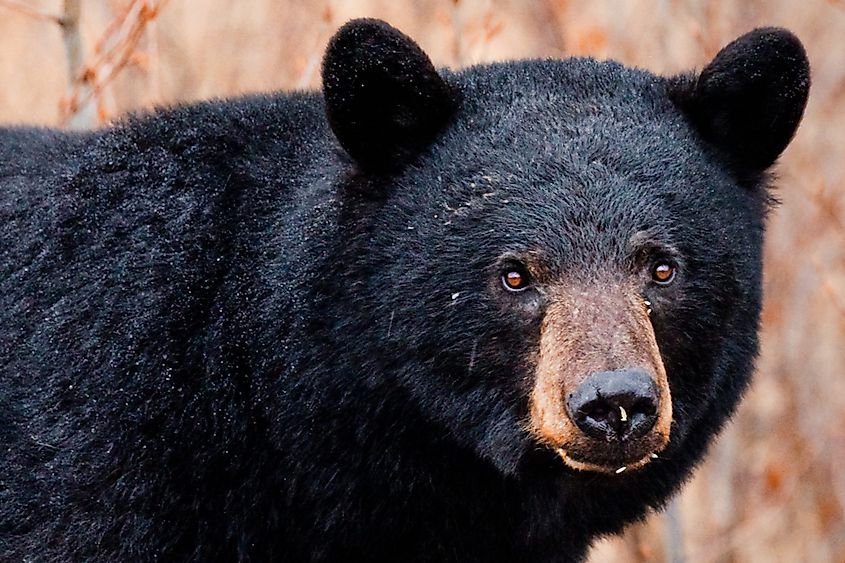
Black bears are crucial to North American ecosystems.
Black bears are known for their dark coats and lighter-colored muzzles. They frequent forests and mountainous areas but can easily be attracted to places with food sources. Both omnivores and scavengers, black bears like to eat anything that smells good and are attracted to things like garbage, left-out food at campsites, and cooking smells. Most active during the early morning and evenings, they have been known to be out during all hours and can become relatively fearless if they are used to humans. This poses a danger to both the bear and people since this can lead to attacks, as well as relocation or euthanization of the bear.
Bears hibernate during the colder months, but no matter what time of year, especially between the months of April and November, it is important to not leave food out, and keep garbage secured in bear-proof containers. Don't offer food to bears.
If you are approached by a black bear, try to appear bigger. Wave your arms, yell, and make noise. Female bears with cubs are the most likely to cause a confrontation, so it is extremely important to give them space so the mother does not feel threatened.
Ticks
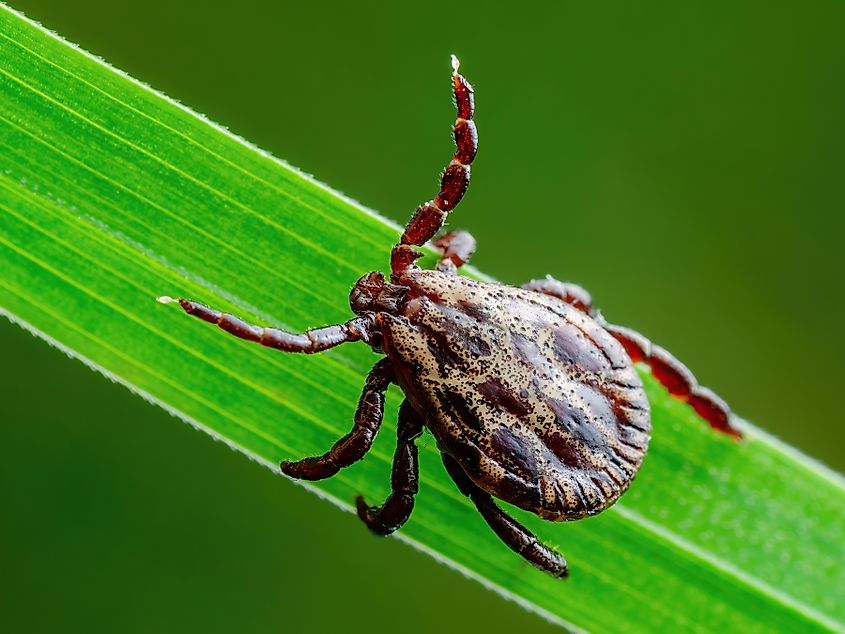
Encephalitis tick crawling on grass, a vector for Lyme disease and other tick-borne illnesses.
Although ticks are not dangerous themselves, as they don't have venom, they are an issue due to the diseases they carry.
Common tick species found in Oregon include Western black-legged ticks, American dog ticks, Rocky Mountain wood ticks, brown dog ticks, and Pacific coast ticks. These ticks carry diseases such as Rocky Mountain spotted fever, tularemia, and Lyme disease.
Rocky Mountain spotted fever can cause chills, muscle aches, nausea, vomiting, and fatigue. Serious complications include rash, vasculitis, and organ damage. Tularemia causes skin ulcers, swollen lymph nodes, and flu-like symptoms. Lyme disease can cause rashes, flu-like symptoms, neurological symptoms, and extreme muscle and joint pain.
The best way to avoid a tick bite is to wear long clothing that covers exposed skin, proper footwear, and bug spray. After being out in tall grass and forested areas, make sure to check yourself and others for attached ticks. If you spot a tick, carefully remove it and keep it for identification purposes.
Coyote
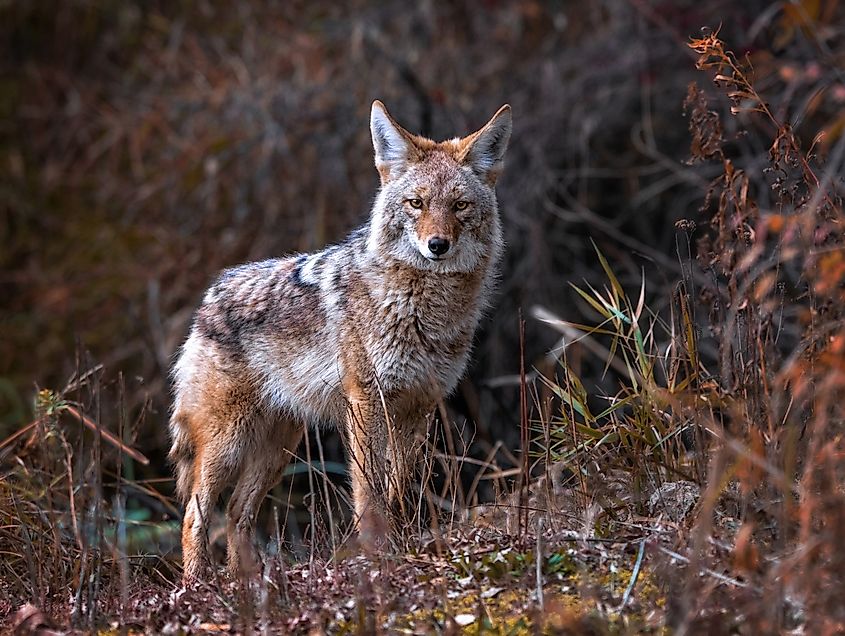
Coyotes are intelligent predators that are excellent hunters. They are fast, adaptable, and sneaky. Known to eat smaller prey like rabbits, rodents, and farm animals such as chickens, they also prey on pets like cats and small dogs.
Although they are usually solitary hunters, they can form packs, and this makes them more dangerous as they utilize distraction tactics as well as ambushing.
To avoid a coyote confrontation, keep pets on a lease or in fenced yards. Outdoor cats are at the most risk for a coyote attack. Small children can also become prey. Coyotes, when their fear of humans is lessened, can also become braver and attempt to nip or attack adults.
If approached by a coyote, appear bigger and scarier than you are. Wave your arms and make loud noises.
Northern Pacific Rattlesnake
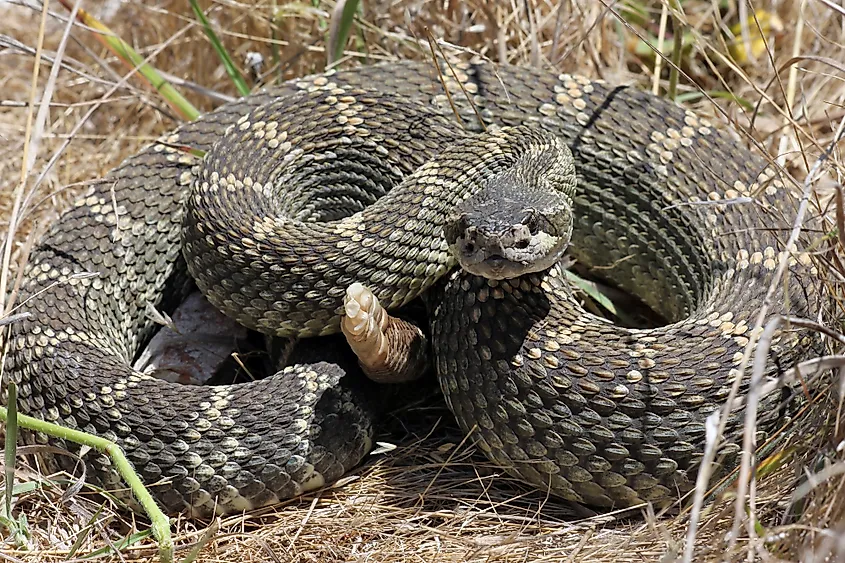
These rattlesnakes frequent areas such as prairies, grasslands, brush, and forests, and are considered nocturnal, though you can still encounter them during the day. Reaching an average length of 36 inches, these snakes have triangular heads, and the classic rattle on the ends of their tail.
Run-ins with these snakes are rare since they generally avoid human contact. They don't hunt humans, opting for rodents and small mammals instead. Bites are usually caused by the snake feeling threatened and having no other option than to strike.
Symptoms of a bite include intense pain, swelling, blistering, and bleeding due to clotting issues caused by their venom. More serious symptoms include necrosis of surrounding skin, breathing troubles, neurological troubles, and cardiac issues. The main treatment for a rattlesnake bite is an administration of anti-venom, so it is important to seek medical attention if bitten.
Brown Recluse Spider
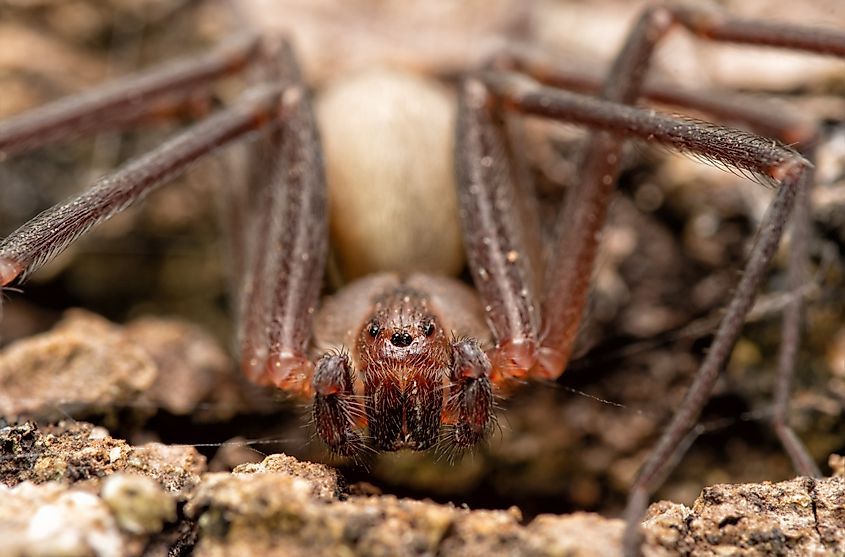
These spiders are identified by their brown coloring, and the violin-shaped marking on their backs. They prefer to stay as hidden as possible, opting to build their webs in basements, attics, wood piles, sheds, and other dark spaces. Their webs are often unorganized, unlike other spiders' more intricate webs.
These spiders aren't looking for a fight; they'd rather avoid it. A bite usually occurs by startling it or pressing up against the spider or its web.
Bites can cause pain, redness, swelling, and itching, as well as fever and nausea. Severe complications include ulcers caused by necrosis due to their venom. These ulcers require medical attention.
Deer
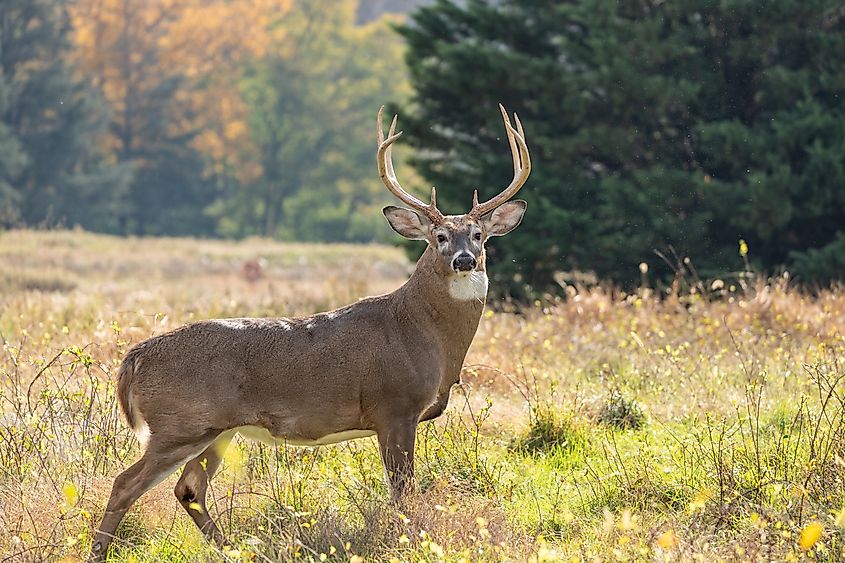
Deer aren't actually dangerous in a predator sense. They are vegetarians, and won't attack humans unless potentially rabid. The danger from deer comes from driving in deer territory.
Deers are known to be easily spooked and, when confronted with an oncoming car, can run out in front of it. They also may attempt to run across the road with no time left to safely cross, causing a collision. They also travel in groups, which means if you see one deer on the side of the road, it's safe to assume there's more.
Avoid deer collisions by using your high beams at night and being aware of your surroundings. Watch the sides of the road, especially at dawn and dusk. If you don't have to, don't drive at night in the country. If you see a deer, slow down and proceed with caution, expecting it to make a sudden dart out onto the road.
On average, there are about 6000 reported collisions with deer per year in Oregon.
Wasps
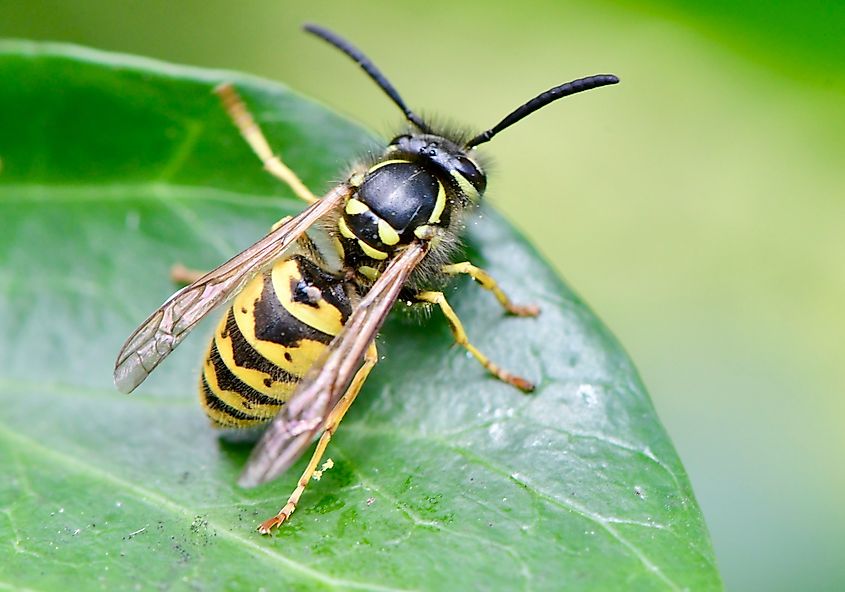
Wasps, like bees, are yellow and black in color but are far more slender and not fuzzy. They are also far more aggressive. While bees die after stinging you, wasps can attack without repercussions and can sting and bite more than once.
Wasps live in colonies, building nests either above ground or underground, depending on the species. They are extremely territorial and will attack if they feel the slightest bit threatened.
Wasp bites do not contain venom or poison but still hurt. Their stingers, however, contain venom that causes pain, swelling, and, in some cases, severe allergic reactions.
if someone happens to be allergic to wasps, a sting can cause redness, warmth, swelling, itching, and anaphylaxis. Anaphylaxis can cause difficulty breathing, swelling of the face including the lips and tongue, rapid heartbeat, dizziness, and nausea. It is crucial to seek medical attention if anaphylaxis occurs and to administer an EpiPen if available.
Moose
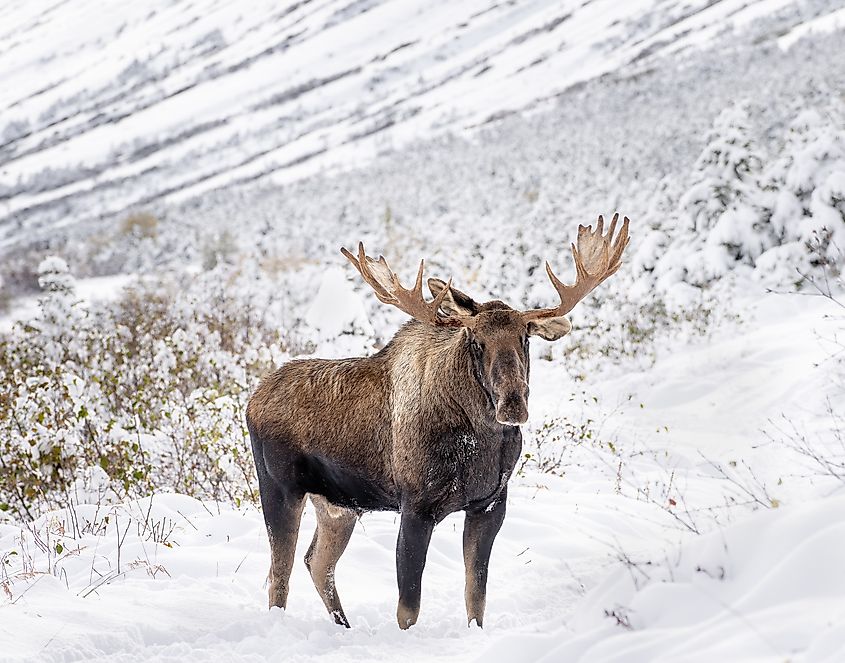
Although rare in the state of Oregon, moose are present in the Blue Mountains after one wandered in either from Idaho or Washington and established a herd. There are an estimated 50 moose in the area now, which will hopefully be a growing number.
Known for their massive size, large antlers, and the flap that hangs below their chins, moose are territorial, especially during rutting season. They prefer to live in forested areas near lakes and rivers but can wander into nearby fields, prairies, and towns. This is when they become dangerous.
The main cause of death by moose is a collision between the animal and a vehicle. Due to their large size and long legs, hitting a moose can be detrimental. A car will likely strike the animal in the legs, causing it to fly over the hood and into the windshield or roof. Like deer, moose can run out in front of you without warning, which is why you should always be alert when driving through moose-populated areas.
Moose can also cause harm when they feel threatened. They have been known to charge cars, people, and animals.
Yellow Sac Spider
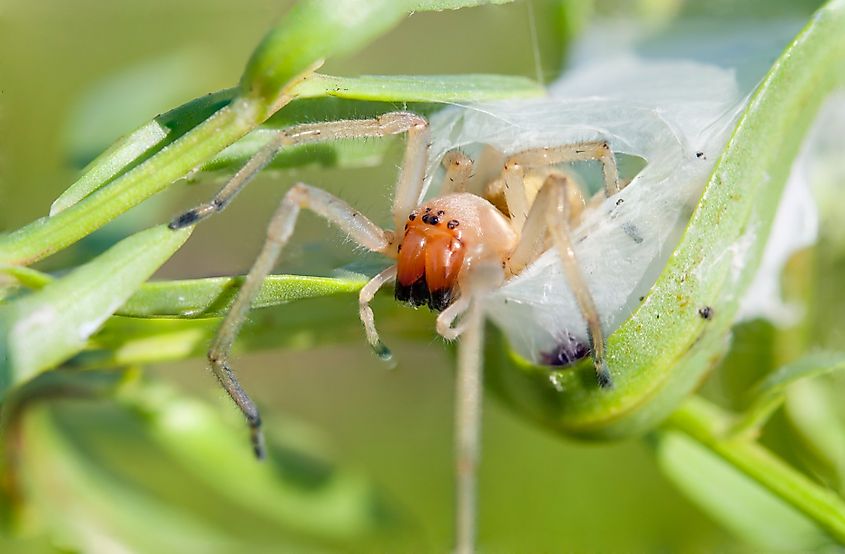
Yellow sac spiders are usually pale yellow or beige in color and are quite small. They build sac or tube like webs which they use to hide and lay eggs. They are nocturnal hunters, preferring to actively go after prey rather than wait for it to enter its web.
Bites from these spiders can cause pain, redness, nausea, headaches, ulcers and blisters at the bite site, and emotional and physical discomfort.
To prevent bites, seal up doors and windows to prevent them from easily entering your home, and be aware that they like to build their homes in hidden and protected areas like corners, debris piles, and bark.
Great White Shark
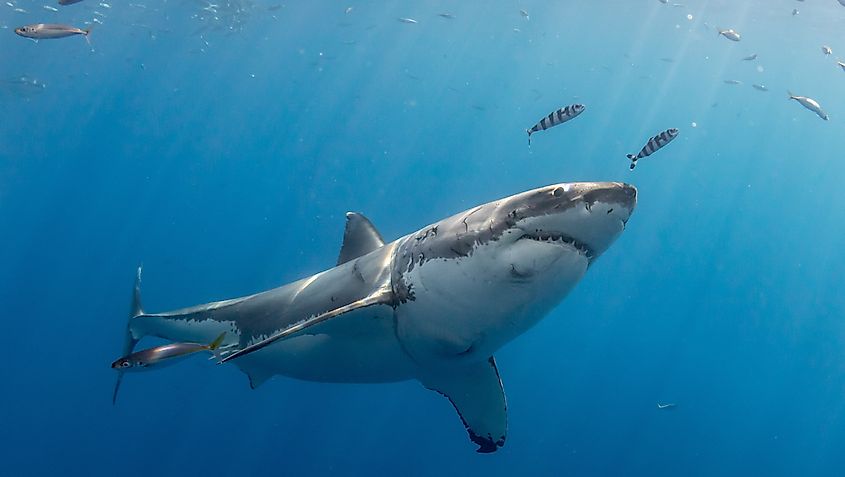
Great white shark swimming with pilot fish
Great white sharks live in the ocean and are massive in size. They average between 11 and 20 feet, with torpedo-shaped bodies and sharp teeth. They are predatory ambush hunters, waiting for the perfect time to strike. They can often be seen breaching the surface of the water as they patrol an area. Their primary food sources are seals, sea lions, and fish like tuna. Sightings on the Oregon coast are rare and usually occur further offshore.
Shark attacks on humans are rare but severe. Often, they attack because they get a human confused with a seal or another one of their usual prey. The appearance of surfboards on the water and people padding on them can further this confusion.
Sharks attack without warning and are aggressive from the get-go. Their sharp teeth can instantly rip through the skin, remove limbs, and cause extreme blood loss.
Remember to always be aware of your surroundings when swimming in the ocean, and be aware of alerts and warnings such as signs and beach closures.
Black Widow Spider
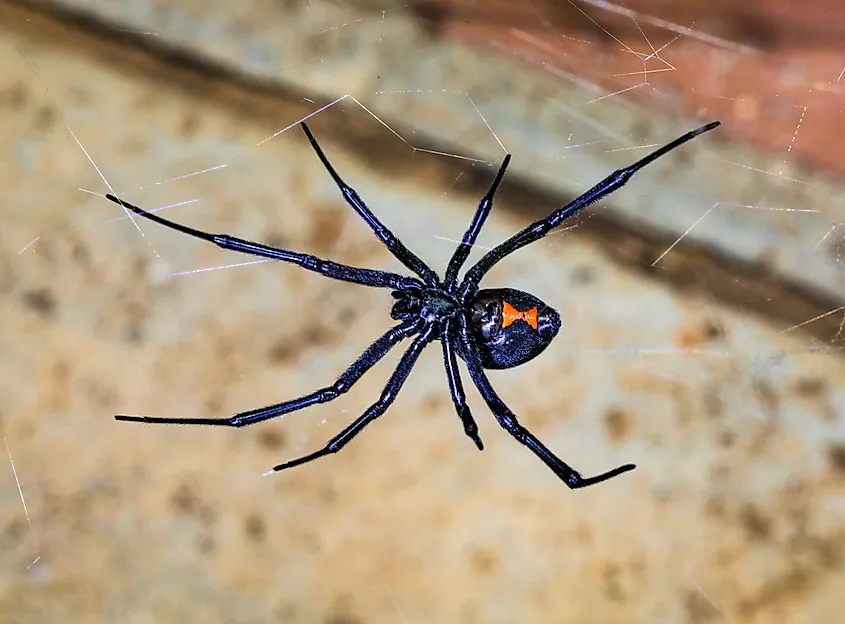
Black widow spiders are easily recognizable by their plump, black bodies and iconic red hourglass pattern on their backs. They build unorganized webs in hidden, dark areas like attics, basements, and debris piles. They are primarily nocturnal hunters, feeding on insects.
symptoms of a black widow bite include pain, often intense, that can spread throughout the body. Other symptoms to watch out for are muscle cramps, sweating, nausea, and breathing difficulties.
If bitten, seek medical attention. To avoid bites, be cautious in areas where these spiders like to live, and don't provoke them.
Jellyfish

Jellyfish swimming in the ocean with magical ambient light and beautiful rocks at the bottom
There are only a few jellyfish species on the Oregon coast, two of them being the West Coast sea nettle and velella velella. Velella jellyfish are mostly harmless but can be confused with Portuguese man-of-war, a more dangerous creature. This is largely due to their 'sail-like' top halves and blue and violet coloring.
West Coast sea nettles are translucent and bell-shaped with long tentacles. They are more than capable of dealing a painful sting, which can cause pain, irritation, redness, and in some cases, severe allergic reactions.
Never touch a jellyfish that has washed up onto shore or attempt to interact with one in the water. Give them space, and if you see them in the water, it's best not to swim there.
Stay Safe While Exploring Oregon's Wilderness
So whether you're planning on surfing, hiking, mountain climbing, or just chilling by the campsite, it's essential to always be aware of your surroundings. Stay up to date with the latest alerts, such as warnings about bears in the area and beach notices. Carry the right equipment, whether that's a bear spray, a cellular device, or a first aid kit. Don't let the threat of a rare attack discourage you from exploring everything Oregon has to offer, but it's never a bad idea to be prepared for anything.











